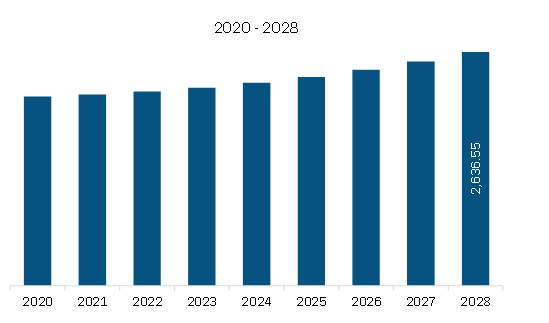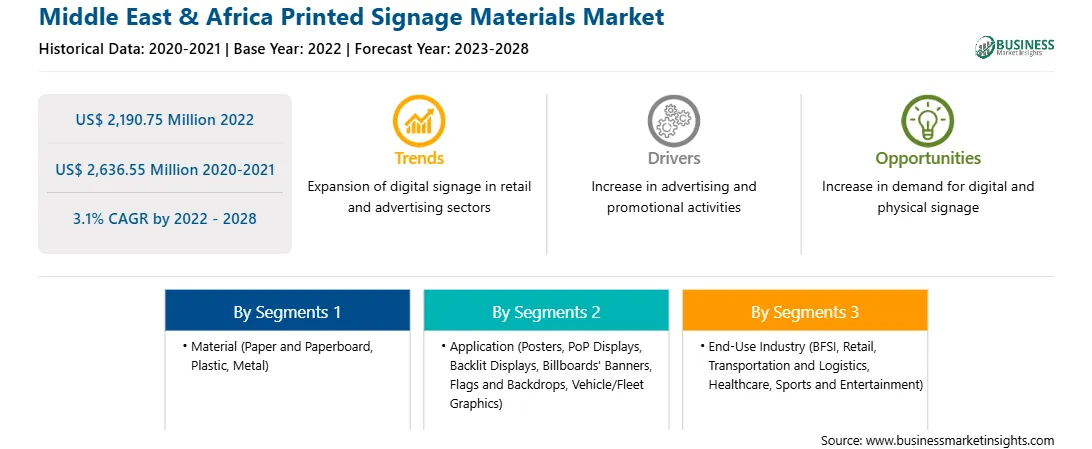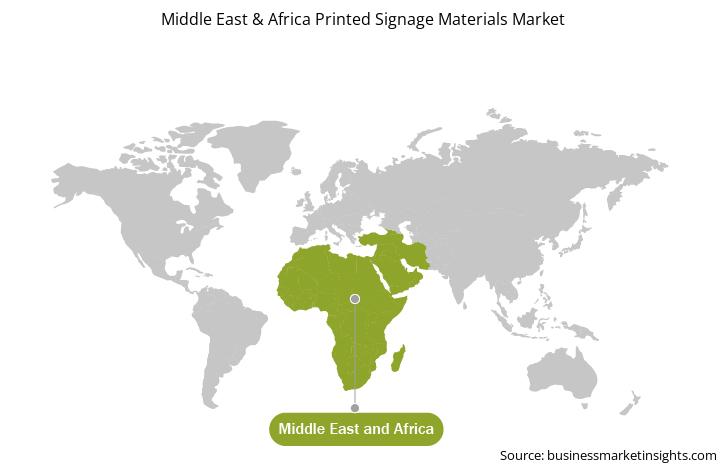Digital signage has solid information-sharing capabilities. Digital signage displays video and other multimedia content for advertising and informational purposes. Digital screens can offer dynamic, entertaining content relevant to the audience. An outdoor shopping mall can use digital kiosks for wayfinding and advertising. Many companies across retail, hospitality, education, transportation, sports, banking, entertainment, and other industries extensively use digital signage to connect with their consumer base. The digital nature of digital signage allows for the rotation of multiple signs and advertisements within a single display, making them easier to swap out and update than printed signage. In addition, digital displays contain tracking tools that gather data on the effectiveness of sign messaging and location. Therefore, digital signage is becoming highly popular among small businesses, supermarkets, and department stores. Further, manufacturers nowadays offer innovative outdoor-specific screens designed to withstand wind, sunlight, high and low temperatures, and even moisture. In addition, outdoor screens are now designed to be easier to read, even in direct sunlight, giving the consumer a much better viewing experience. Owing to all these advantages, the popularity of digital signage is growing significantly, which is hampering the demand for printed signage. The low demand for printed signage restrains the growth of the Middle East & Africa printed signage materials market.
The need for billboards, posters, flags, backdrops, etc., is increasing across all major industries, such as retail, banking and financial institutions (BFSI), and sports, in Middle East & African countries. Major countries in this region include South Africa, Saudi Arabia, and the UAE. Per a report, the retail sector in the GCC is expected to grow from US$ 253.2 billion in 2018 to US$ 308 billion by 2023, at a CAGR of 4%. According to industry experts at International Expo Consults, the innovative signage and printed signage solutions at the retail locations would play a massive part in the sector's growth. International Expo Consults hosts SGI Dubai, which is the largest exhibition for the signage and graphic imaging industry in the Middle East & North Africa (MENA). Further, the availability of raw materials; the ever-rising population base; the growth and expansion of several verticals; an introduction of new and innovative products; the growing range of functions in retail stores, corporate offices, hospitals, and hotels; and an increase in individual disposable income are among the notable growth determinants for the Middle East & Africa printed signage materials market in the Middle East & Africa.

Strategic insights for the Middle East & Africa Printed Signage Materials provides data-driven analysis of the industry landscape, including current trends, key players, and regional nuances. These insights offer actionable recommendations, enabling readers to differentiate themselves from competitors by identifying untapped segments or developing unique value propositions. Leveraging data analytics, these insights help industry players anticipate the market shifts, whether investors, manufacturers, or other stakeholders. A future-oriented perspective is essential, helping stakeholders anticipate market shifts and position themselves for long-term success in this dynamic region. Ultimately, effective strategic insights empower readers to make informed decisions that drive profitability and achieve their business objectives within the market.

| Report Attribute | Details |
|---|---|
| Market size in 2022 | US$ 2,190.75 Million |
| Market Size by 2028 | US$ 2,636.55 Million |
| CAGR (2022 - 2028) | 3.1% |
| Historical Data | 2020-2021 |
| Forecast period | 2023-2028 |
| Segments Covered |
By Material
|
| Regions and Countries Covered | Middle East and Africa
|
| Market leaders and key company profiles |
|
The geographic scope of the Middle East & Africa Printed Signage Materials refers to the specific areas in which a business operates and competes. Understanding local distinctions, such as diverse consumer preferences (e.g., demand for specific plug types or battery backup durations), varying economic conditions, and regulatory environments, is crucial for tailoring strategies to specific markets. Businesses can expand their reach by identifying underserved areas or adapting their offerings to meet local demands. A clear market focus allows for more effective resource allocation, targeted marketing campaigns, and better positioning against local competitors, ultimately driving growth in those targeted areas.

The Middle East & Africa printed signage materials market is segmented into material, application, end-use industry, and country.
Based on material, the Middle East & Africa printed signage materials market is segmented into paper and paperboard, plastic, metal, and others. In 2022, the plastic segment registered a largest share in the Middle East & Africa printed signage materials market.
Based on application, the Middle East & Africa printed signage materials market is segmented into posters, pop displays, backlit displays, billboards' banners, flags and backdrops, vehicle/fleet graphics, and others. In 2022, the posters segment registered a largest share in the Middle East & Africa printed signage materials market.
Based on end-use industry, the Middle East & Africa printed signage materials market is segmented into BFSI, retail, transportation and logistics, healthcare, sports and entertainment, and others. In 2022, the retail segment registered a largest share in the Middle East & Africa printed signage materials market.
Based on country, the Middle East & Africa printed signage materials market is segmented into South Africa, Saudi Arabia, the UAE, and the Rest of Middle East & Africa. In 2022, the Rest of Middle East & Africa segment registered a largest share in the Middle East & Africa printed signage materials market.
3A Composites GmbH; Antalis; Avery Dennison Corp; IGEPA group GmbH & Co KG; Inapa Investimentos Particip Gestao SA; ORAFOL Europe GmbH; and Spandex AG are the leading companies operating in the Middle East & Africa printed signage materials market.
The Middle East & Africa Printed Signage Materials Market is valued at US$ 2,190.75 Million in 2022, it is projected to reach US$ 2,636.55 Million by 2028.
As per our report Middle East & Africa Printed Signage Materials Market, the market size is valued at US$ 2,190.75 Million in 2022, projecting it to reach US$ 2,636.55 Million by 2028. This translates to a CAGR of approximately 3.1% during the forecast period.
The Middle East & Africa Printed Signage Materials Market report typically cover these key segments-
The historic period, base year, and forecast period can vary slightly depending on the specific market research report. However, for the Middle East & Africa Printed Signage Materials Market report:
The Middle East & Africa Printed Signage Materials Market is populated by several key players, each contributing to its growth and innovation. Some of the major players include:
The Middle East & Africa Printed Signage Materials Market report is valuable for diverse stakeholders, including:
Essentially, anyone involved in or considering involvement in the Middle East & Africa Printed Signage Materials Market value chain can benefit from the information contained in a comprehensive market report.